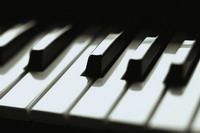Piano Sheets > Paul Anka Sheet Music > Puppy Love (ver. 1) Piano Sheet
Puppy Love (ver. 1) by Paul Anka - Piano Sheets and Free Sheet Music

About the Song
"Puppy Love" is a popular song written by Paul Anka in 1960 for Annette Funicello, whom he was dating at the time.[1] Anka's version reached #2 on the Billboard Hot 100 singles chart and #33 on the UK singles chart.
Twelve years later it was revived by Donny Osmond, who took it to #3 on the Billboard Hot 100 and #1 on the UK singles chart for five weeks in July 1972. The song has also been covered by British pop group S Club Juniors.
On March 15, 1972, D.J. Robert W. Morgan played the Donny Osmond version for 90 minutes straight on KHJ in Los Angeles. LAPD mistakenly raided the station studios after receiving numerous calls from listeners. Confused, the officers left without making any arrests.[2] Paul Albert Anka, OC (born July 30, 1941 in Ottawa, Ontario) is a Canadian singer, songwriter, and actor of Lebanese origin. He became a naturalized US citizen in 1990.
Anka first became famous as a.
Download this sheet!
About the Artist

Random article
Music sheets - what is all about? Back in the 19th century, songs in the United States were popularized by musicians through music sheets. It was only in the 1950s when musicians started to bring music sheets to bands so they could play, allowing more people to hear their compositions.
Simply, a music sheet is musical composition in printed form. It is composed of unbound sheets of paper where a musical notation of a song is printed. Many associate it with popular music. However, musicians say popular songs are not the only ones written down on paper. Many classical songs were published in music sheets and classical musicians performed even unfamiliar songs with these printed compositions.
(More...)
